Timber Vs Lumber Vs Log – Differences, Uses, Pros And Cons
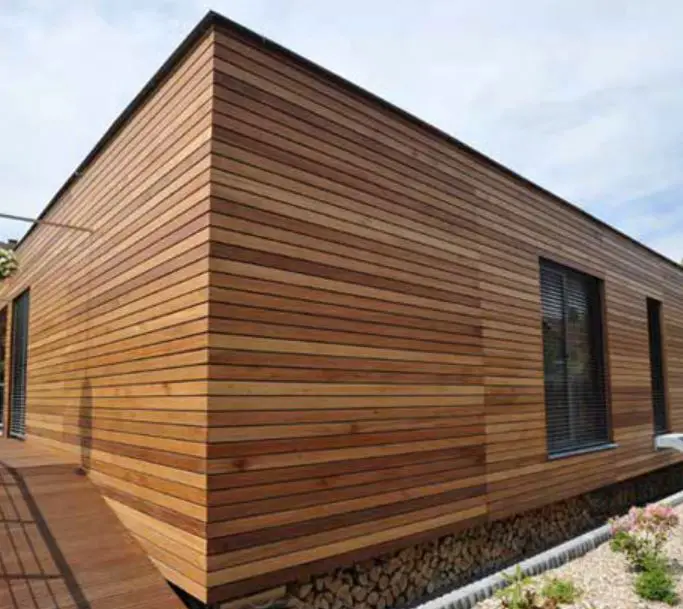
The terms, ‘timber’, ‘lumber’ and ‘log’ are not simply interchangeable terms for the same thing. Each one respectively refers to a different type of wood in terms of where that wood is in its processing phase.
Here I’ll discuss exactly what timber is, what lumber is and what log is. The differences between the three may not be as subtle as you think, so let’s get into it!
What Exactly Is Timber?
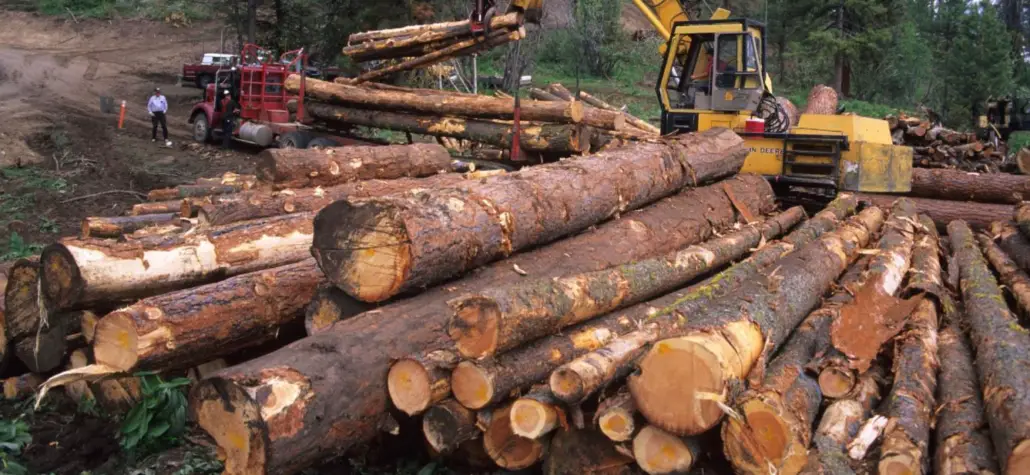
Timber is a term that’s easy to remember.
When someone cuts down a tree, the common phrase to shout out is, “TIMBER!” So, timber is a felled (cut down) tree that’s still in its raw form.
When you see a bunch of cut down trees lying in a heap, this is referred to as timber.
A fallen tree from any point onwards can be referred to as timber.
What Are Some Common Uses Of Timber?
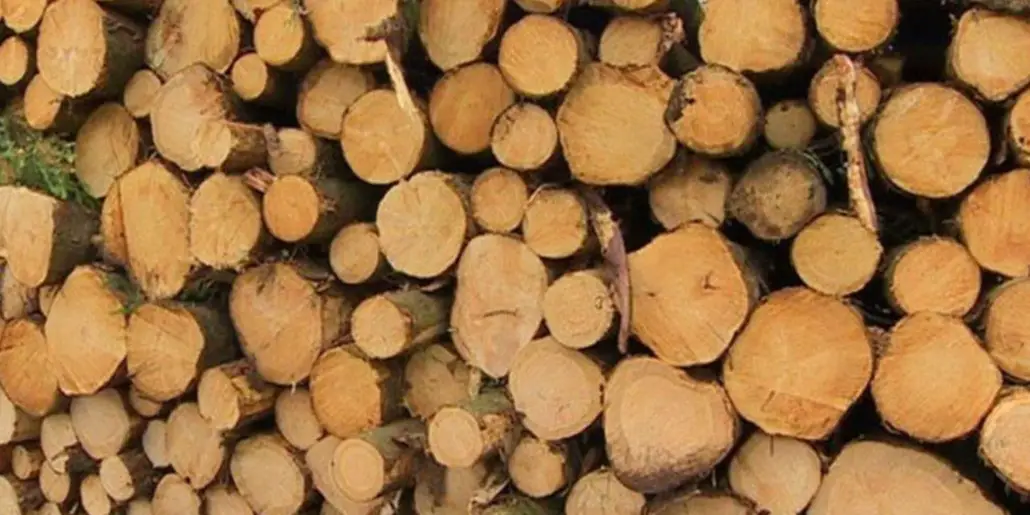
Timber is unprocessed wood. It is simply a tree that’s been cut down.
Timber is still in its bark and hasn’t been worked at all. But why would someone buy unprocessed timber?
Well, here are some common uses for timber in its raw form:
Processed timber is ultimately the same thing as lumber.
Cabins & Building
Raw timber can be used to construct cabin walls, and the raw beams are also used ‘as it’ for ceiling support. Processed timber is also used heavily in building.
Bespoke Furniture
Cutting a slab from raw timber can be used to make novelty barstools and other bespoke furniture.
Firewood
Raw timber that’s been dried is perfect for bonfires.
Paper Production
Paper manufacturing companies purchase raw timber to create pulp that’s transformed into paper.
Timber Pros & Cons Over Other Wood Styles
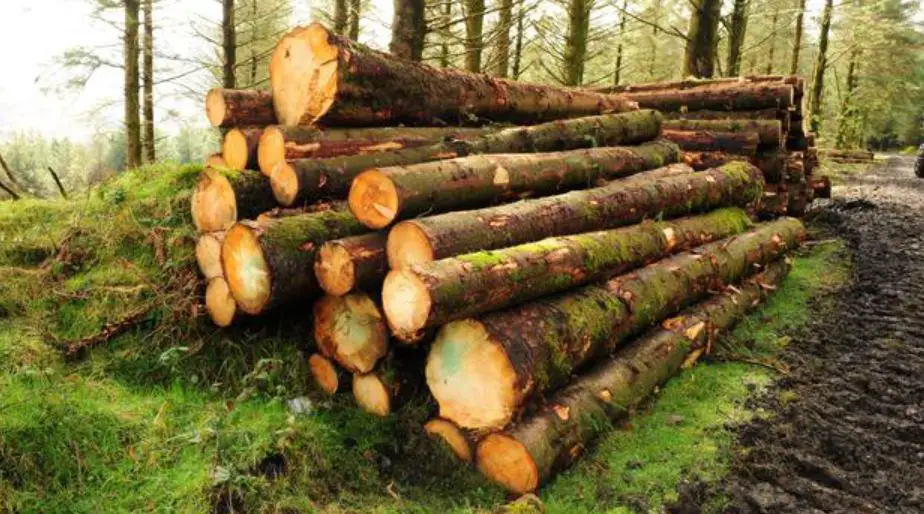
Timber has its uses, but isn’t always ideal for every purpose. Here are some pros & cons of timber over lumber and log.
Pros
Natural Appearance
The most notable advantage of timber is that it’s still in its rawest form, so every natural wood grain & pattern is still visible.
This is the perfect material for novelty furniture as well as rustic cabin building.
Prolonged Burning
Timber is the best firewood option when it’s cut up into logs.
Once dried, the natural construct of timber will take longer to burn up, keeping your fire going for longer.
Cons
Unshaped
Timber can be cut into smaller pieces, but it hasn’t yet been shaped into a versatile form.
Timber is therefore a less versatile material.
Limited Usability
There aren’t many uses for timber until it has been processes into shaped lumber.
There are some uses, but these are limited due to the random shape of each piece of timber.
What Exactly Is Lumber?
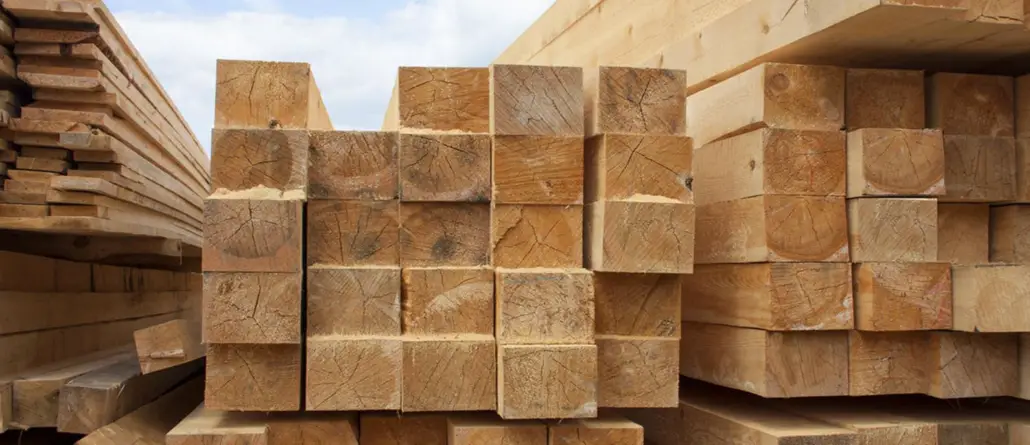
Lumber refers to timber that has been processed to varying degrees.
These felled trees are transformed into beams, planks and poles for use mainly in construction.
Timber is cut, planed and/or sanded to create wood pieces suited to various purposes. Lumber can still also be referred to as timber.
What Are The Most Common Uses Of Lumber?
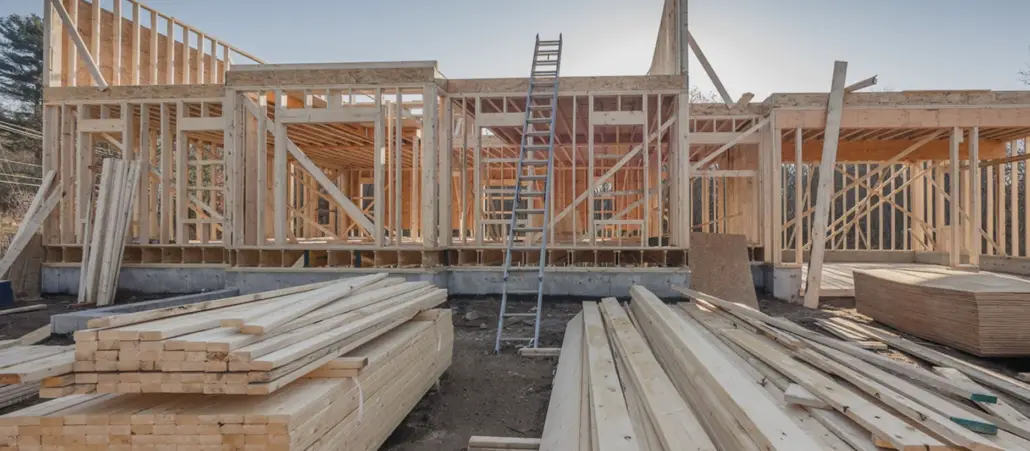
Lumber in general has many uses, most of which are dedicated to construction and furniture manufacturing.
Here are some general uses:
Ceiling Beams
Most lumber pieces end up in the ceilings of homes and other buildings.
They hold up ceilings and roof tiles to give a building shape and structure.
Foundations & Building
Foundations for housing and other structures can benefit from long lumber beams and lumber is also heavily used in house construction.
Furniture Production
Even the sofa you sit on to watch television probably has lumber inside it.
This is the structural integrity every piece of furniture needs to hold weight and accommodate the fabric and cushioning that make up a couch.
Lumber is also used to make chairs, tables, desk, kitchen cabinets, etc.
Fencing
Fencing poles and planks fall under the lumber category too.
Even though most poles are only slightly processed for this purpose, they are referred to as lumber because some processing has been done.
The bark of the timber has been removed and the pole has been sanded, changing it from timber to lumber.
What Are the Best Types Of Buildings To Use Lumber In?
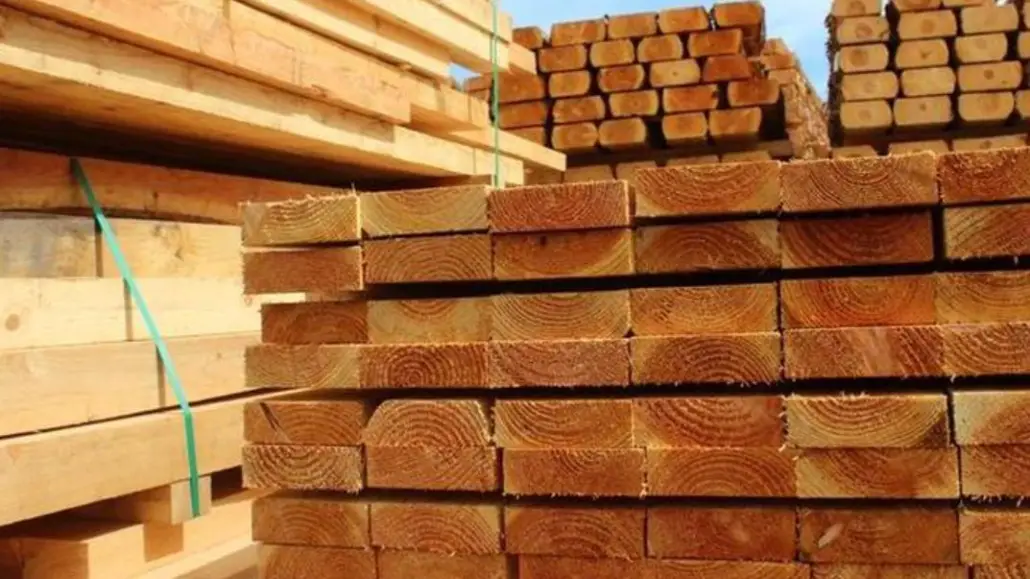
Lumber is known as a framing material for almost all buildings. The roofs of buildings are typically arched, and it’s lumber that holds everything up.
But even flat roofs use lumber to hold up ceiling panels. Without the sturdiness of lumber beams, roofs would have weak integrity and collapse more easily.
Another common use for lumber is bridges. A bridge or peer is almost always shaped by a skeletal structure that’s made up of lumber.
What Are The Pros & Cons of Lumber Over Other Wood Styles?
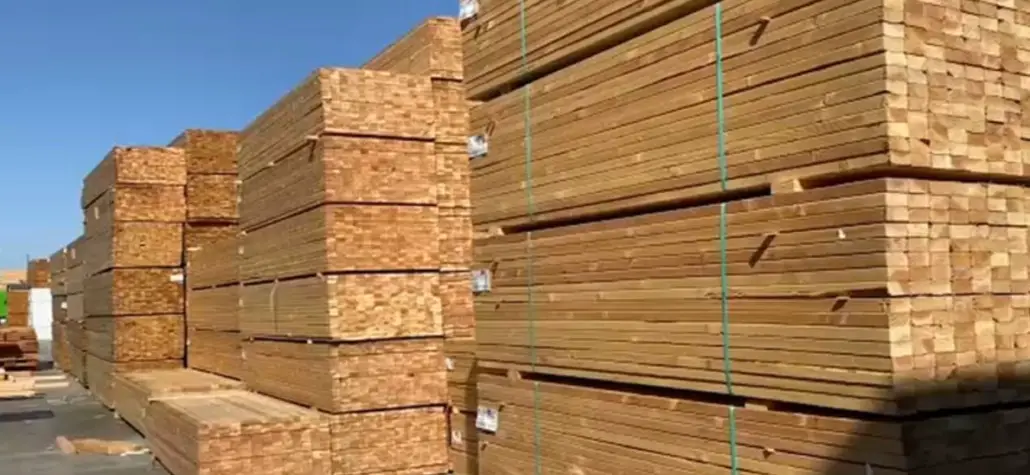
Lumber has tons of uses that aren’t mentioned above. But how does this style of wood differ from timber? Let’s look at some pros & cons.
Pros
Versatile Shaping Capabilities
Lumber is typically processed to accommodate a particular purpose. Ceiling beams, for instance need to be a certain thickness to fulfill their purpose of holding up ceiling panels.
There are several thousand different ways to shape lumber to make it compatible with a respective building purpose.
Manageable and Flexible
Even a processed piece of lumber might need to be further processed by cutting it to size or to fit a certain angle.
This is easily done with lumber, because it is easy to cut, sand or plain. This can’t always be done with timber without a lot of effort, because the wood is still in its natural form.
Cons
Synthetic Look & Feel
Timber isn’t processed for its natural aesthetics. It’s a structural material rather than a ‘nice looking’ material.
Compared to timber, lumber looks plain and unappealing, as it doesn’t contain any of its inherent aesthetic qualities.
What Exactly is Log?
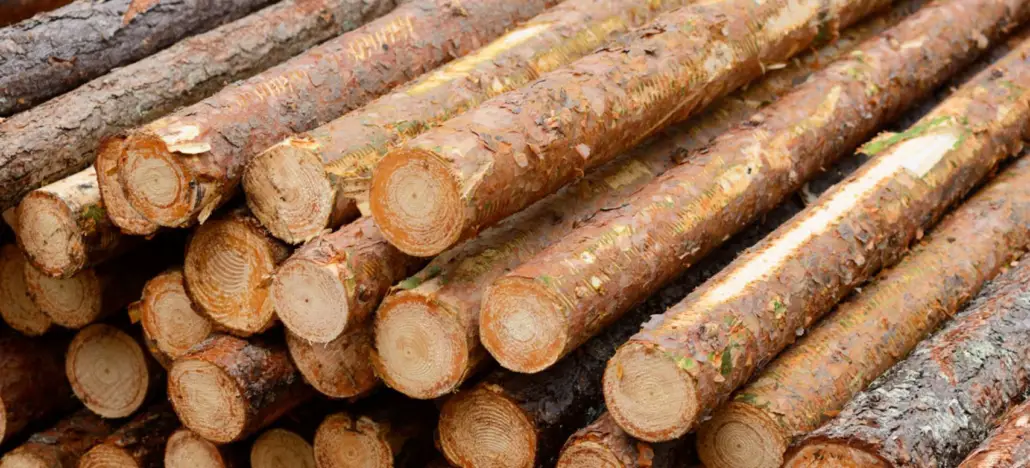
‘Log’ refers to a piece of wood that’s small enough to carry.
Logs are wood pieces that have been cut from timber, and haven’t been processed in any other way.
You can identify a log by noticing the raw form it is still in—such as bark, cut-off side branch stubs, gaps and natural blemishes.
What are the Common Uses of Log?

Logs are predominantly used as fuel for fires. But there are other sues for logs for those who like to be creative. Let’s look at three.
Log Cabins
An authentic log cabin is usually built only from logs. Some cabins are also built using traditional materials, with logs subsequently attached on the interior and exterior to give it that log cabin look.
Log Furniture
Tables and stools can also be made from logs. Each piece of furniture will end up being very unique, because instead of making the log adapt to the furniture you’re making, the design accommodates the log in its most natural form.
Carving
Sculptures can also be whittled or carved from a log. A skilled wood carver can turn any boring log into a work of art!
For What Types of Buildings is Log Best Utilized?
Log cabins are the most common use for logs. Building an entire cabin out of logs is a popular hobby for many, and the end result is a home cabin that’s rustic and unique.
They look beautiful and can often make use of the trees on the land where the cabin is built.
What are the Pros & Cons of Log Over Lumber & Timber?
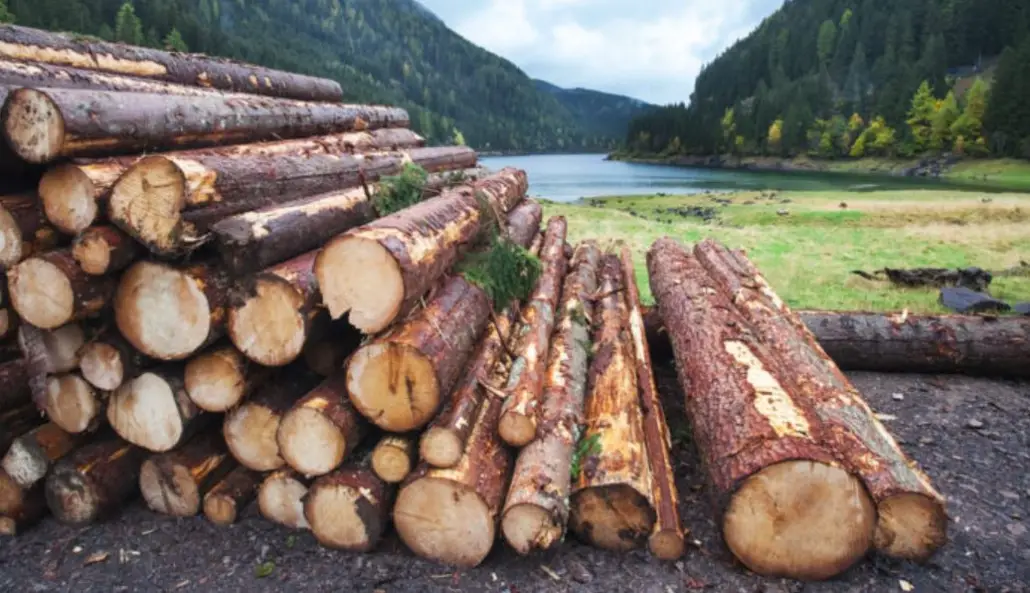
What are some ways that logs are superior to timber and lumber? Let’s explore some pros & cons compared to these two types of wood.
Pros
Logs Can Be Carried
Logs are typically small enough to carry, making them easy to manage.
So whether you’re building a house or building a fire, logs are easier to work with compared to lumber and timber.
Logs are Rustic Looking
Most people love the rustic look & feel of logs, which explains why so many people build log cabins for their getaway destinations.
Logs Are Perfect for Fires
You wouldn’t put timber in a fire without cutting it up into logs first. Nor would you typically throw lumber into a fire, as this would be a waste of all the processing it has gone through.
Logs are the best option for campfires and bonfires, because they can be placed on the fire with ease and burn well in their natural, dry form. They are also easy to split into smaller pieces for ease of use.
Cons
Limited Use
Because of the size and look of logs, you wouldn’t find much use for them unless you’re a highly creative builder or sculptor.
Most people will use logs for firewood, but they shouldn’t be disregarded as a source of inspiration for you.
Randomly Shaped
There’s no set shape to logs, and every single one is unique and random in terms of size and shape.
This may pose a challenge to someone trying to use logs for building.
How Do Timber, Lumber and Log Compare in Price?
Each species of wood varies in price. But in terms of the style of wood you’re selecting, prices will vary as follows:
- Timber is cheaper than lumber simply because it is unprocessed and can be sold directly as is to consumers or corporations.
- Timber is usually more expensive than log because most people purchase logs for firewood. Logs are most often offcuts from timber that has been trimmed to match a particular size.
- Lumber is processed wood that’s been shaped and cut for a particular purpose. It’s most often more expensive than both log and timber because of the time and labor that goes into this processing.
Which Is The Most Popular?
For construction, lumber is by far more popular because of its customized processing. There is however a rise in the popularity of timber because more and more builders prefer the rustic nature of timber.
Logs on the other hand are used more for firewood than for building. But those who do build with log will find that the demand for it is high for reasons other than construction.
Where Is Each Type Used The Most?
Lumber is used for building, as is timber. Logs are mostly used for firewood, but can also be used for building by those who want to go fully rustic in their home or cabin designs.
Logs are also popular for decorating buildings such as cabins and homes. Creative construction professionals love taking the randomness of logs and making something spectacular with them.
What Are The Different Types Of Timber?
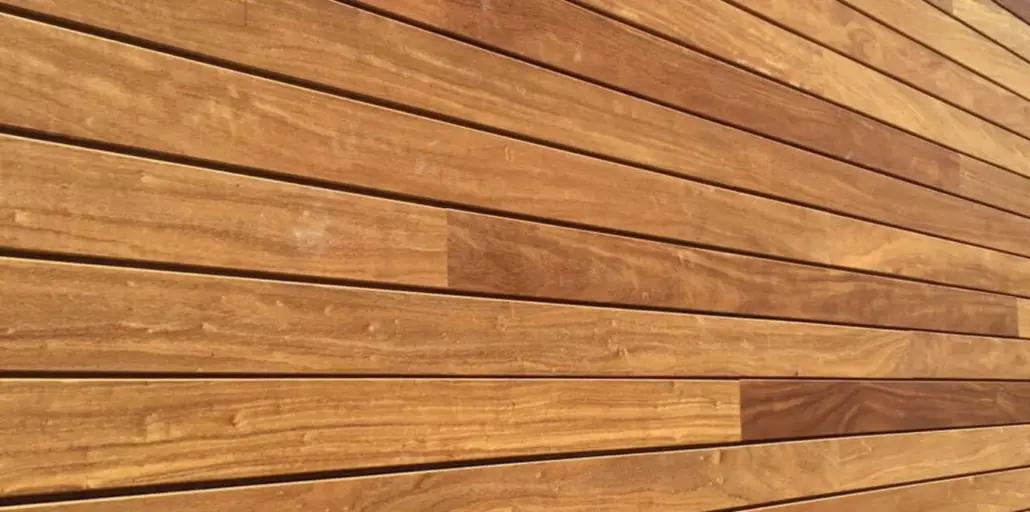
Different wood species are a category on their own. But if we look at the types of timber used in construction, the following gives a general overview:
- Raw timber
- Plywood
- Cross-laminated timber
- Veneer lumber (laminated)
- Oriented strand board
- Engineered bamboo
- Wrought timber
- Sawn timber
What Are The Different Types Of Lumber?
Lumber is processed to fit certain criteria. Here are some examples of this:
- Fencing poles
- Molded lumber
- Beams
- Panels
- Veneers
- MDF board
- Flooring
- Wood cladding
What Are The Different Types Of Log?
Just about any type of wood can be rendered as logs if the tree was large enough.
Logs in the US are usually derived from Fir, Cedar, Walnut and Pine trees.
Are Logs The Same As Lumber?
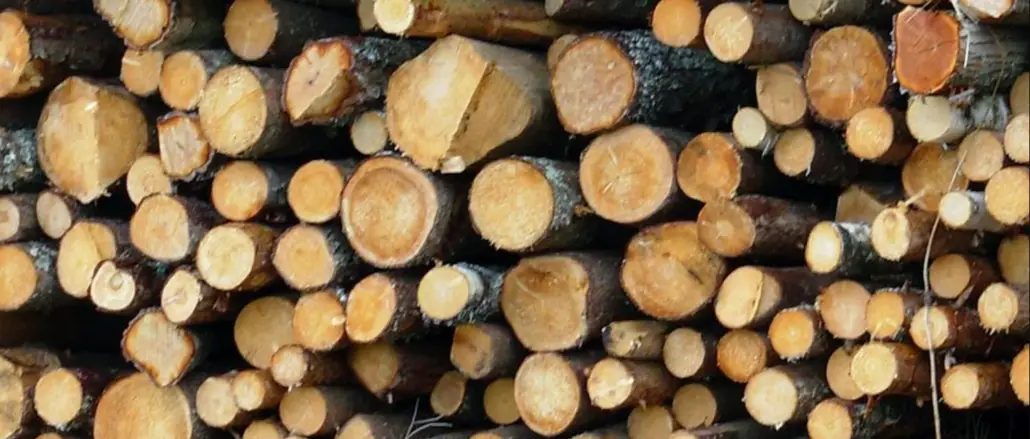
Logs are massively unprocessed compared to lumber. Logs are still in their raw form and usually still in their bark. The only process that’s happened to logs is that they have been cut.
Lumber on the other hand is processed through cutting, plaining and industrial sanding. These processes are usually done on a factory level.
Final Thoughts
Although some of the characteristics of logs, timber and lumber often overlap, you can see for yourself just how different each one is from the other.
If you’ve gone through everything I’ve mentioned carefully, you will now be able to distinguish between all three respectively.
So, the next time you speak about wood, remember to use these three terms correctly instead of interchangeably—especially in the context of building & construction.


